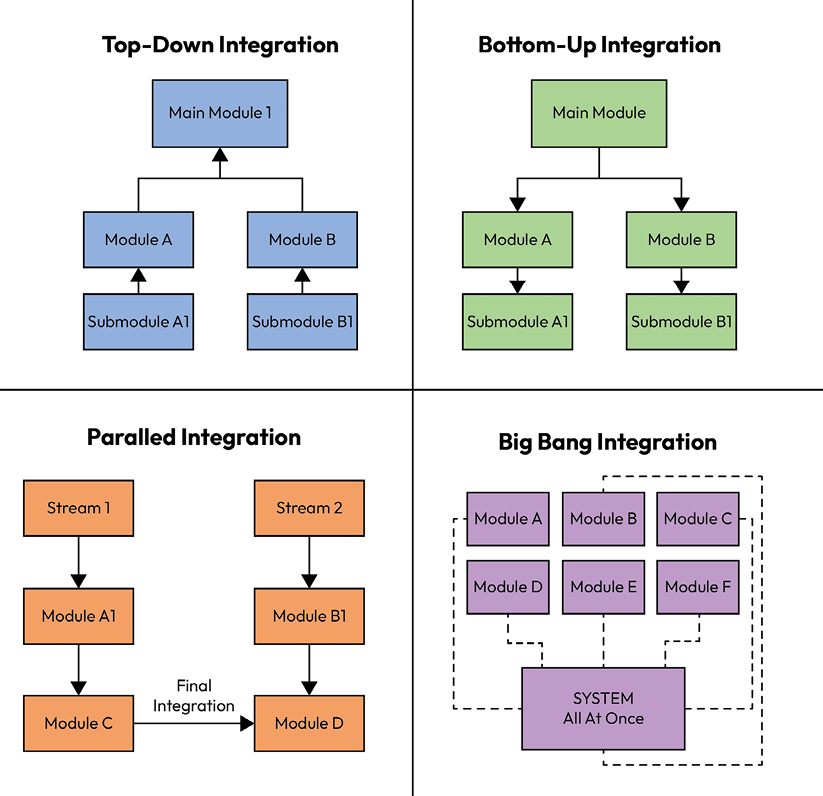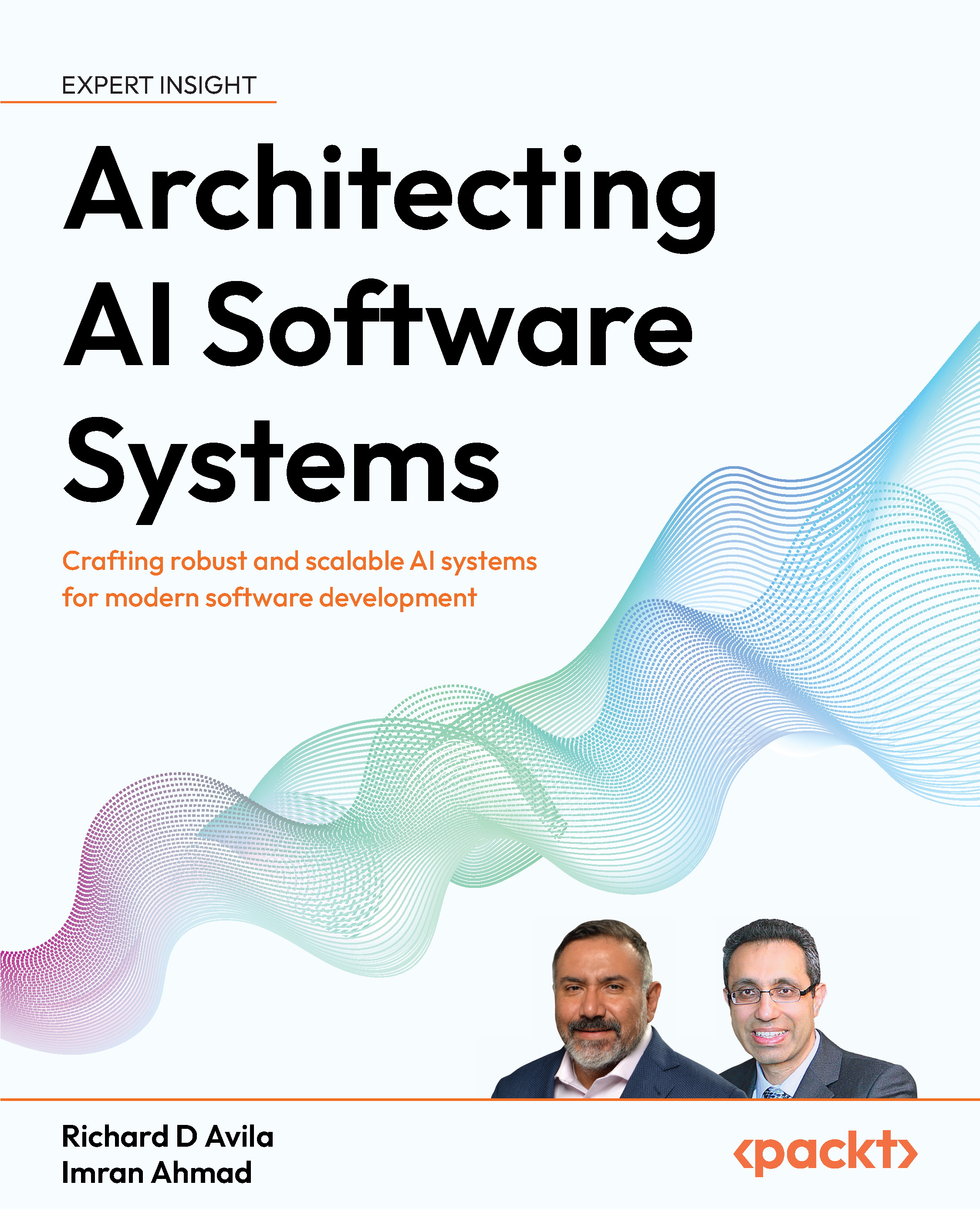Integration and testing
While architects don’t play a major role in integration – primarily done by implementation engineers – integration issues inevitably arise. Architects are consulted to aid in design changes while maintaining system conceptual integrity.
Types of integrations
Several integration approaches exist, each with distinct advantages and challenges for AI system development.

Figure 6.5: Integration approaches comparison
Figure 6.5 provides a visual comparison of four common integration strategies. The top-down approach (blue) begins with the main module and progressively integrates lower-level components, allowing early validation of high-level architectural concepts. The bottom-up approach (green) starts with the smallest components and builds upward, ensuring well-tested foundations before system-level integration begins.
The parallel approach (orange) develops independent integration streams that eventually merge at a...

































































